Why the booster dose is needed. Gimbe Report

What can be found on the booster dose from the reports of the ISS and the Gimbe Foundation
The need for the booster dose is well documented by the data from the Istituto Superiore di Sanità which demonstrate the reduction in vaccination efficacy 5 months after the completion of the primary course. In detail: the effectiveness on diagnosis drops on average from 75.3% for those vaccinated within 5 months to 43.9% for those vaccinated for more than 5 months; the efficacy on severe disease falls on average from 92.5% for those vaccinated within 5 months to 84.8% for those vaccinated for more than 5 months.
This is what the latest report of the Gimbe Foundation underlines: "Overall in people vaccinated with a full cycle (plus any booster dose), compared to those not vaccinated, the incidence of diagnoses is reduced in the various age groups (by 65 , 7-74.9%) and above all serious illness (82.9-93.5% for ordinary hospitalizations; 89.1-100% for intensive care) and death (77.8-97 %)", it is read.
Here is the full text of the updated report of the Gimbe foundation on the progress of the pandemic and the vaccination campaign in Italy:
The independent monitoring of the Gimbe Foundation detects in the week 1-7 December 2021, compared to the previous one, an increase in new cases (105.771 vs 86.412) (figure 1) and deaths (558 vs 498) (figure 2). Currently positive cases are also growing (240,894 vs 194,270), people in home isolation (234,040 vs 188,360), hospitalizations with symptoms (6,078 vs 5,227) and intensive care (776 vs 683) (figure 3). In detail, compared to the previous week, the following changes were recorded:
- Deaths: 558 (+ 12%), of which 17 referred to previous periods
- Intensive care: +93 (+ 13.6%)
- Hospitalized with symptoms: +851 (+ 16.3%)
- Home isolation: +45,680 (+ 24.3%)
- New cases: 105,771 (+ 22.4%)
- Currently positive cases: +46,624 (+ 24%)
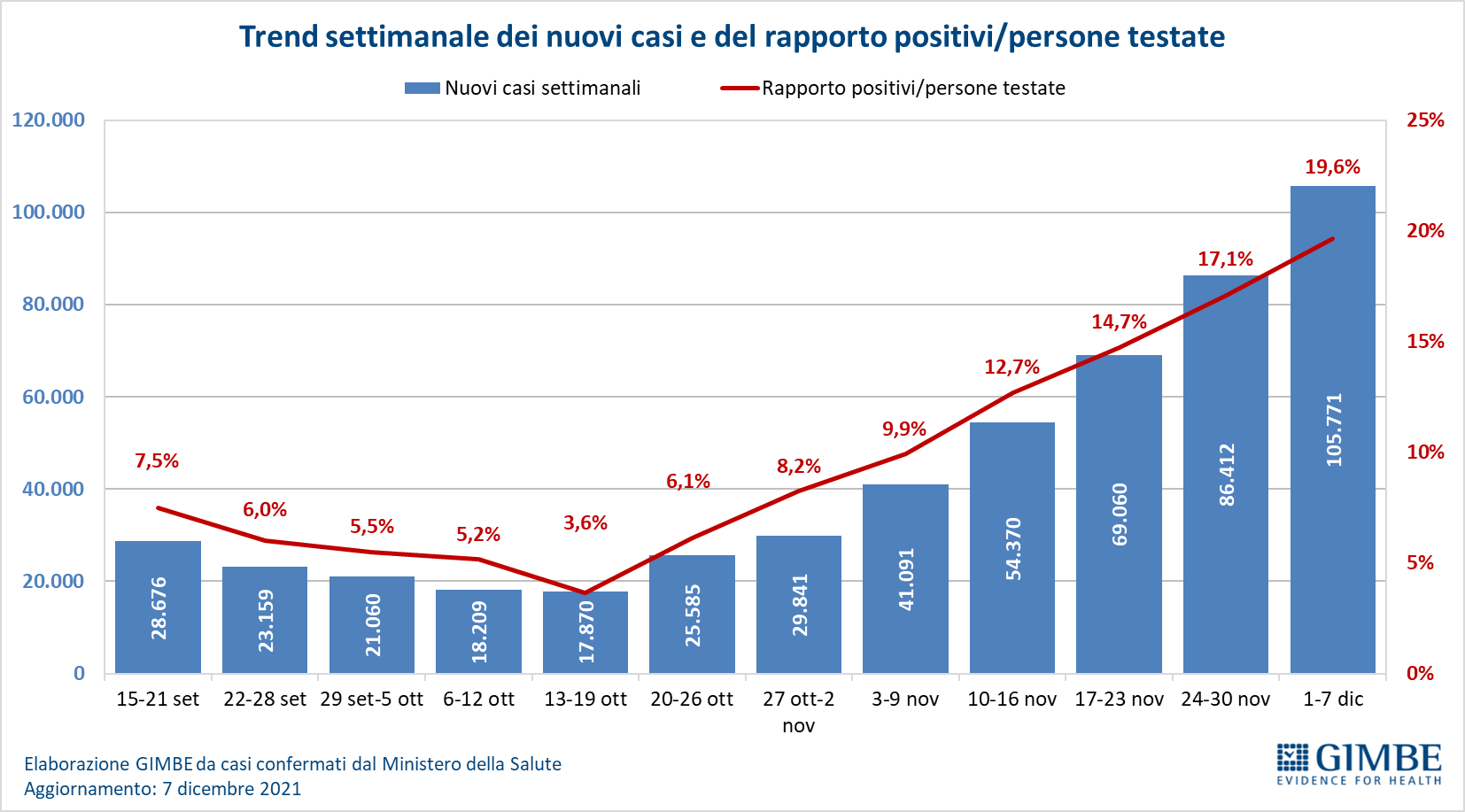
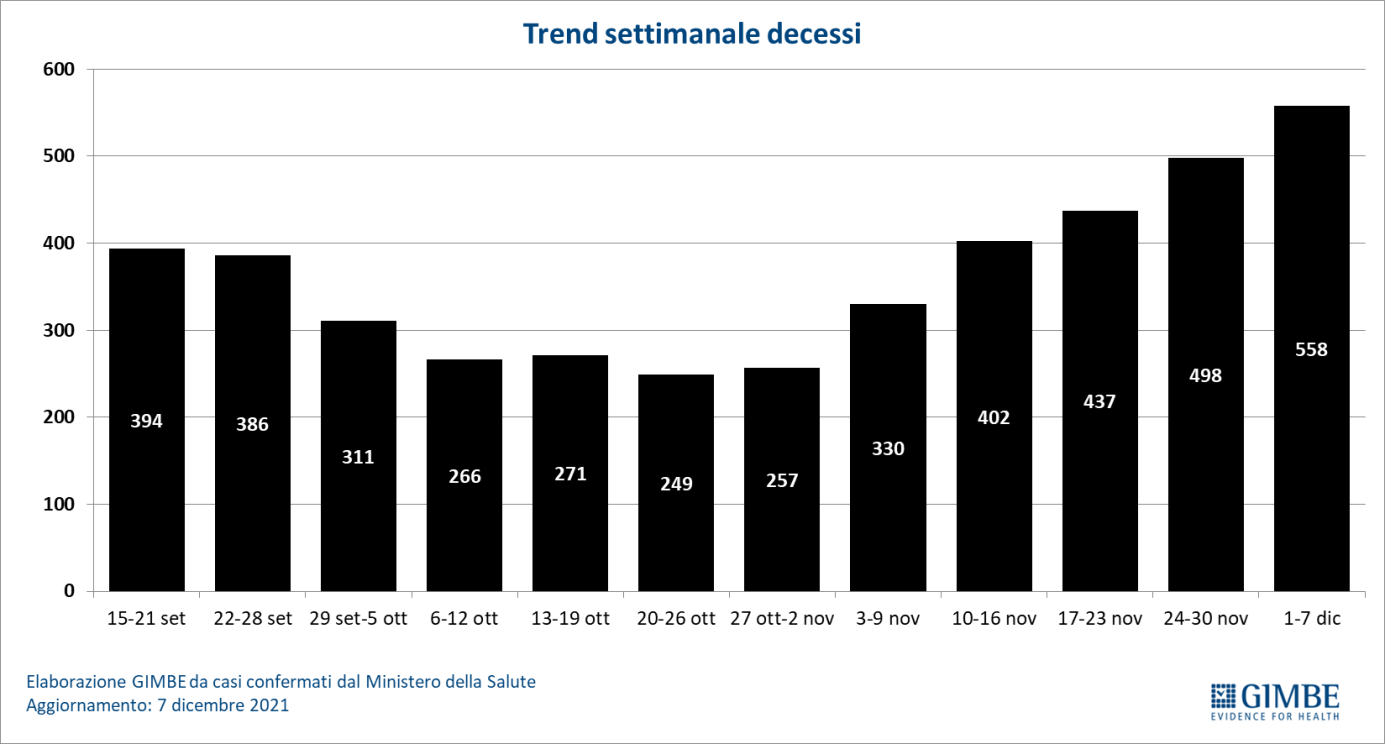
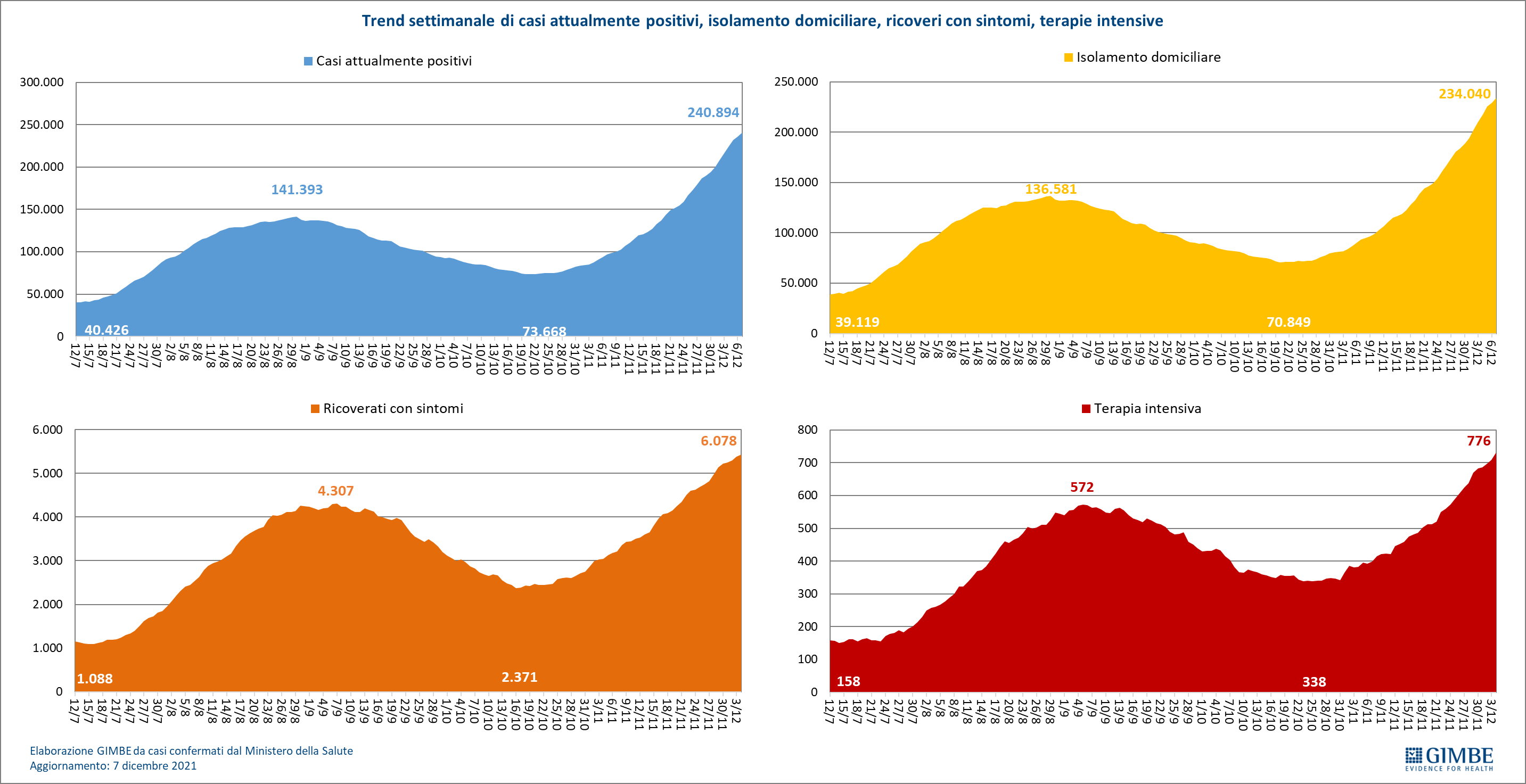
"For 7 weeks – declares Nino Cartabellotta, President of the Gimbe Foundation – new cases have continued to increase with a 7-day moving average more than sixfold: from 2,456 on 15 October to 15,110 on 7 December" (figure 4). The net increase in viral circulation is documented by the increase in both the positive / people tested ratio (from 3.6% to 19.6%) (figure 1), and the positive / molecular swab ratio (from 2.4% to 8). %) and positive / rapid antigenic swabs (0.07% to 0.54%) (Figure 5).
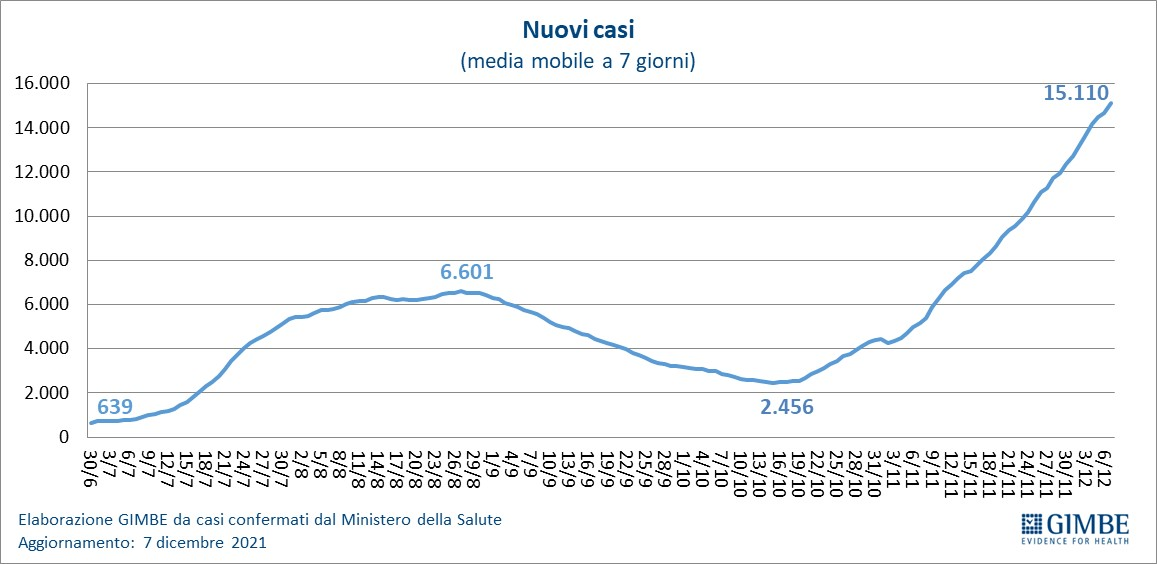
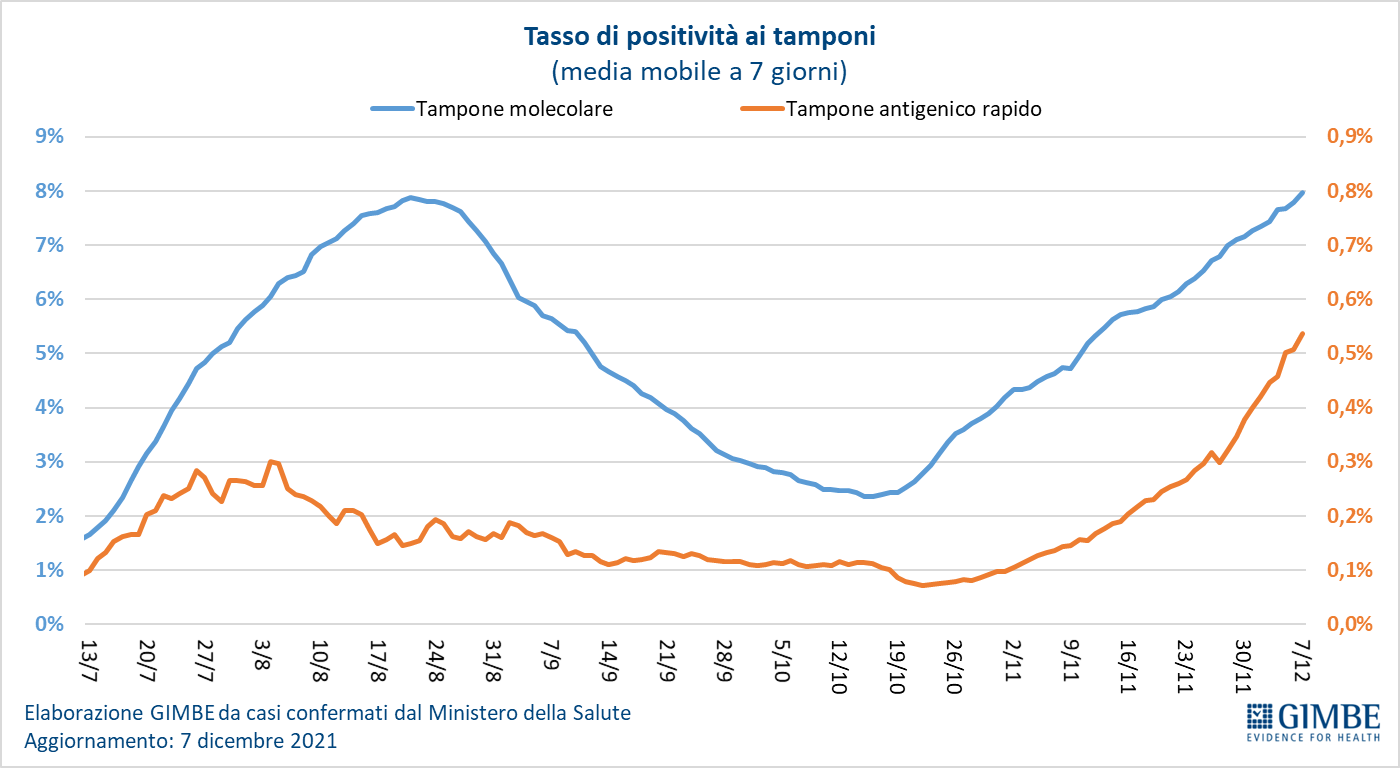
In all the Regions except Molise and Valle D'Aosta there is a percentage increase in new cases: from 1.8% in the Marche to 50.3% in Umbria (table 1). In 52 Provinces the incidence is equal to or greater than 150 cases per 100,000 inhabitants: Trieste (694), Bolzano (651), Treviso (467), Padua (405), Vicenza (391), Venice (390), Rimini (379 ), Gorizia (377), Imperia (367), Pordenone (365), Forlì-Cesena (356), Ravenna (299), Aosta (276), Belluno (276), Rovigo (273), Verbano-Cusio-Ossola ( 267), Ferrara (253), Savona (244), Bologna (244), Udine (244), Ascoli Piceno (239), Verona (235), Trento (233), Viterbo (226), Varese (224), Teramo (216), Rome (200), Ancona (197), Mantua (197), Monza and Brianza (197), Fermo (190), Modena (185), Genoa (182), Reggio di Calabria (177), Asti ( 176), Turin (176), Milan (175), Massa Carrara (175), Brescia 175), La Spezia (174), Cuneo (174), Naples (168), Grosseto (165), Como (164), Biella (164), Pesaro and Urbino 163), Messina (162), Cremona (160), Novara (155), Caltanissetta (154), Pistoia (152), and Reggio nell'Emilia (151) (table 2).
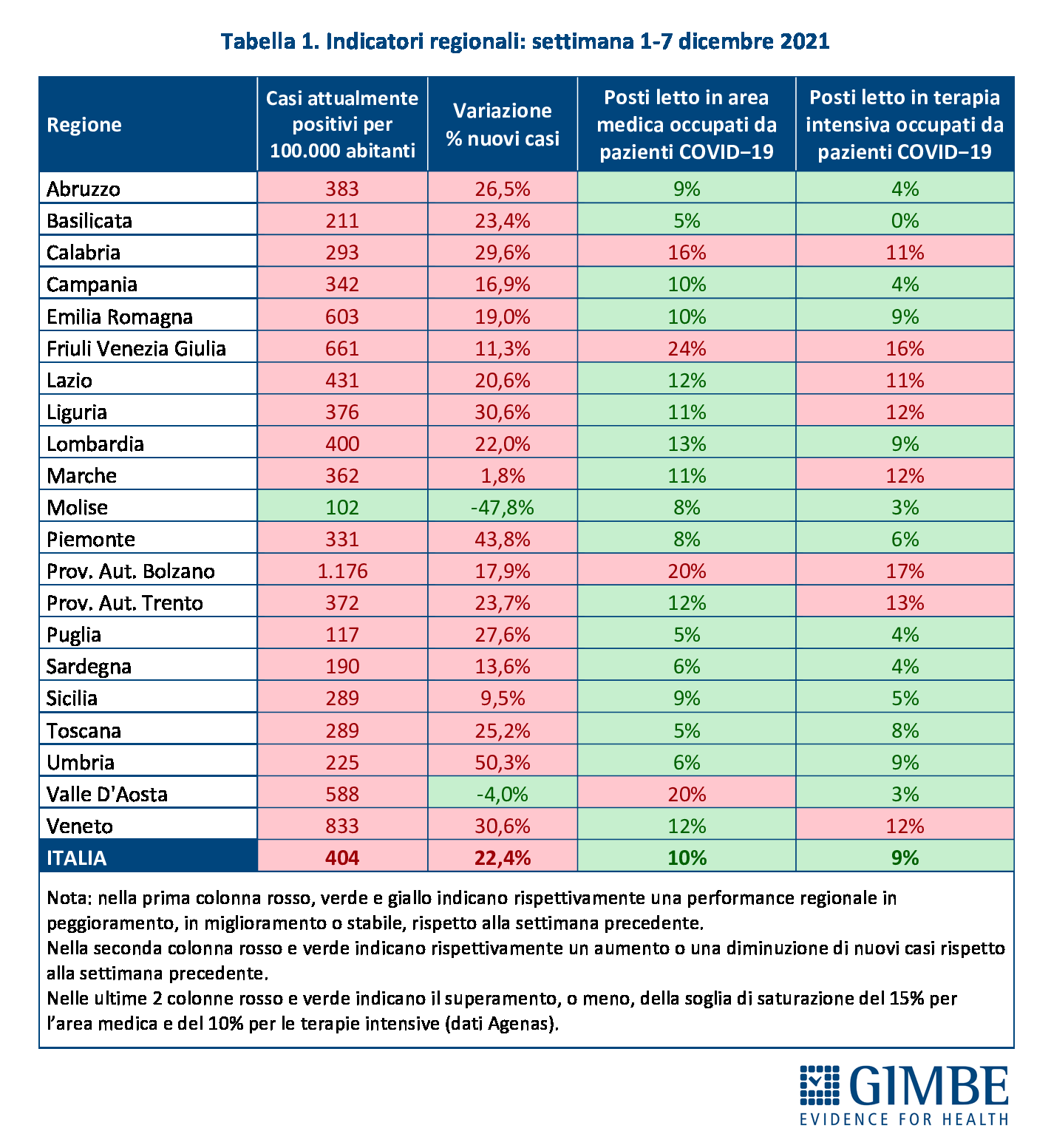

Deaths also increased: 558 in the last 7 days (of which 17 referred to previous periods), with an average of 80 per day compared to 71 in the previous week.
"On the hospital front – says Renata Gili, Head of Research on Health Services of the Gimbe Foundation – there is a further increase in the number of beds occupied by Covid patients: compared to the previous week, + 16.3% in the medical area and + 13.6% in intensive care".
At the national level, as of 7 December the employment rate was 10% in the medical area and 9% in the critical area, with significant regional differences: the thresholds of 15% for the medical area and 10% for the critical area both are outdated in Calabria (16% medical area and 11% critical area), Friuli-Venezia Giulia (24% medical area and 16% critical area) and the Autonomous Province of Bolzano (20% medical area and 17% critical area). Furthermore, for the medical area the Valle D'Aosta is above the threshold (20%), while for the critical area the threshold is exceeded by Lazio (11%), Liguria (12%), Marche (12%), Autonomous Province Trento (13%) and Veneto (12%) (figure 6).
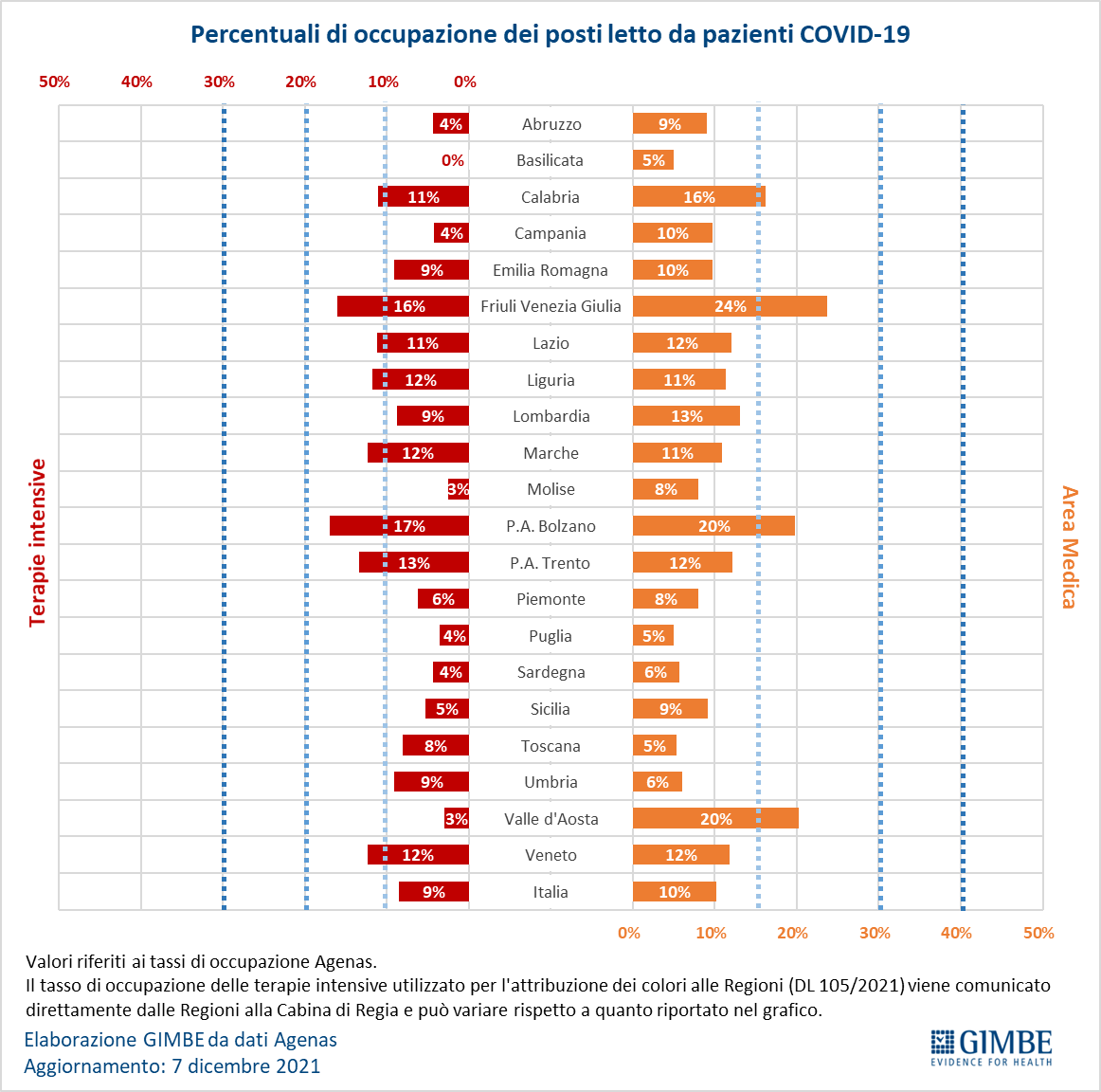
Despite the increase in pressure on hospitals, in recent weeks the percentage of patients admitted to the medical area and in intensive care has progressively reduced out of the total of those currently positive.
In particular, for the medical area, the 7-day moving average fell from 3.47% on 7 November to 2.50% on 6 December and for intensive care from 0.47% on 21 October to 0.33% of 6 December.
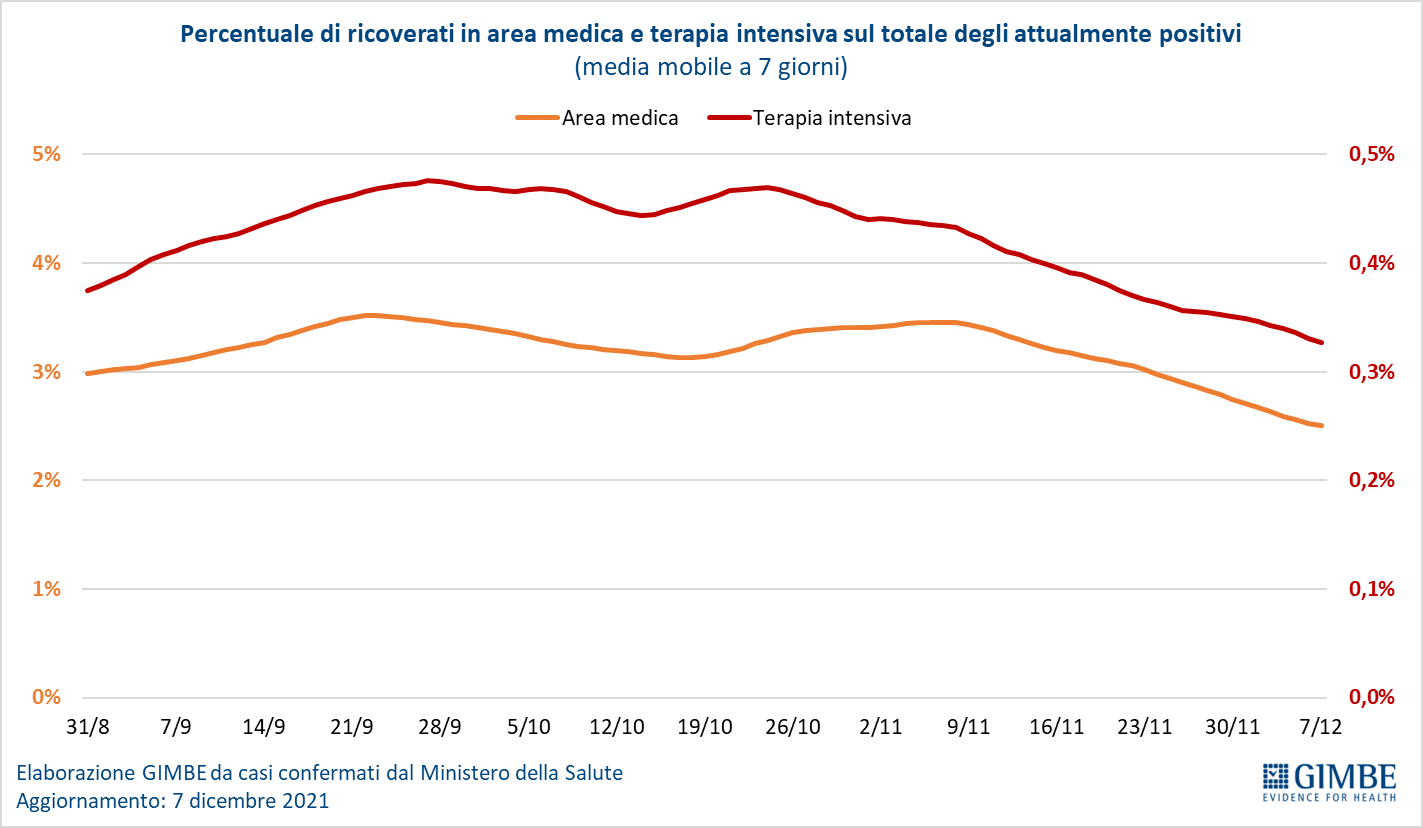
"Compared to last autumn – explains Cartabellotta – the percentage of patients requiring hospitalization out of the total of positives has halved thanks to the protection of the primary vaccination cycle against severe forms of the disease. Furthermore, in the face of an almost constant number of tampons, it is likely that the reduction in the percentage of patients hospitalized in the last few weeks is related to the progressive increase in the third doses administered, which bring efficacy back to higher values ".
«Slows down – points out Marco Mosti, Operations Director of the Gimbe Foundation – the increase in daily admissions to intensive care: the 7-day moving average increases from 56 admissions / day the previous week to 59» (figure 7).
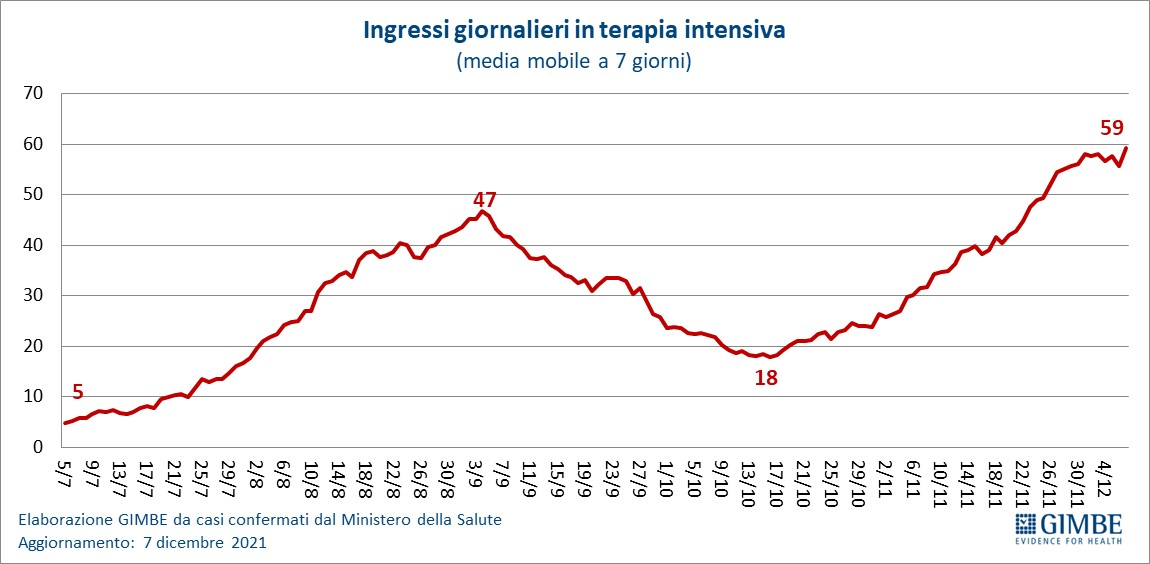
Vaccines: supplies .
As of December 8 (update 06.32) 105,174,747 doses were delivered. "The supplies of the last 7 days – comments Mosti – amounted to 3.1 million doses, but with the current rate of administration the stocks of mRNA vaccines fall, reaching 5.7 million". On the supply front, the Emergency Commissioner also announced the imminent distribution of 1.5 million pediatric doses of Pfizer mRNA vaccine to allow the Regions and Autonomous Provinces to start vaccination for the 5-11 year-olds from December 16. .
Vaccines: administrations.
As of December 8 (update 06.32), 80.1% of the population (no.47.477.646) received at least one dose of vaccine (+251.527 compared to the previous week) and 77.3% (no.4.830. 582) completed the vaccination cycle (+147,509 compared to the previous week) (figure 8). In the last week the number of administrations (No. 3,000,485) increased by 46.8%, with a 7-day moving average of 461,452 doses / day: third doses increased by 52.6% (No. 2,644. 894) and 31.7% of the newly vaccinated (No. 223,116) (Figure 9).
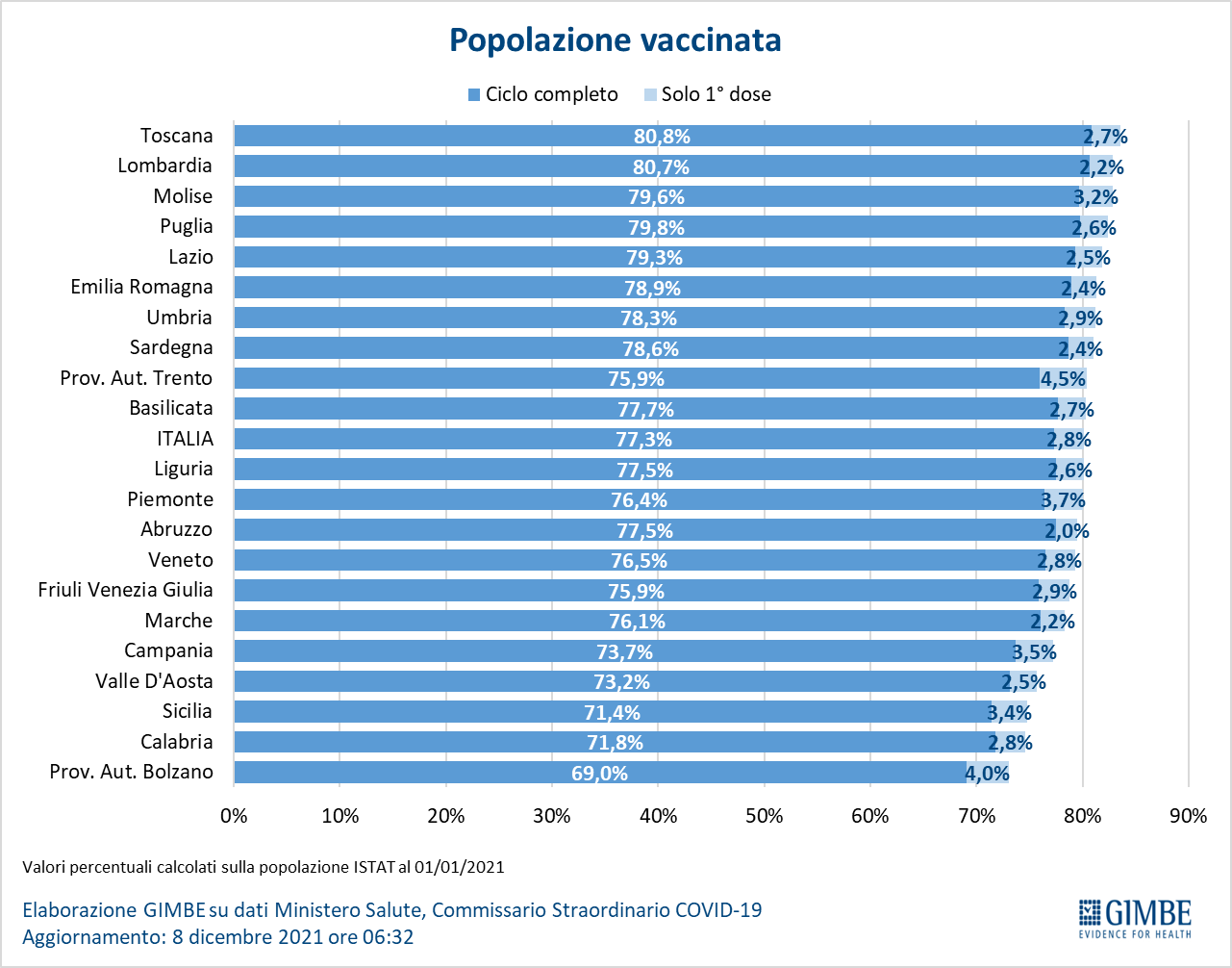
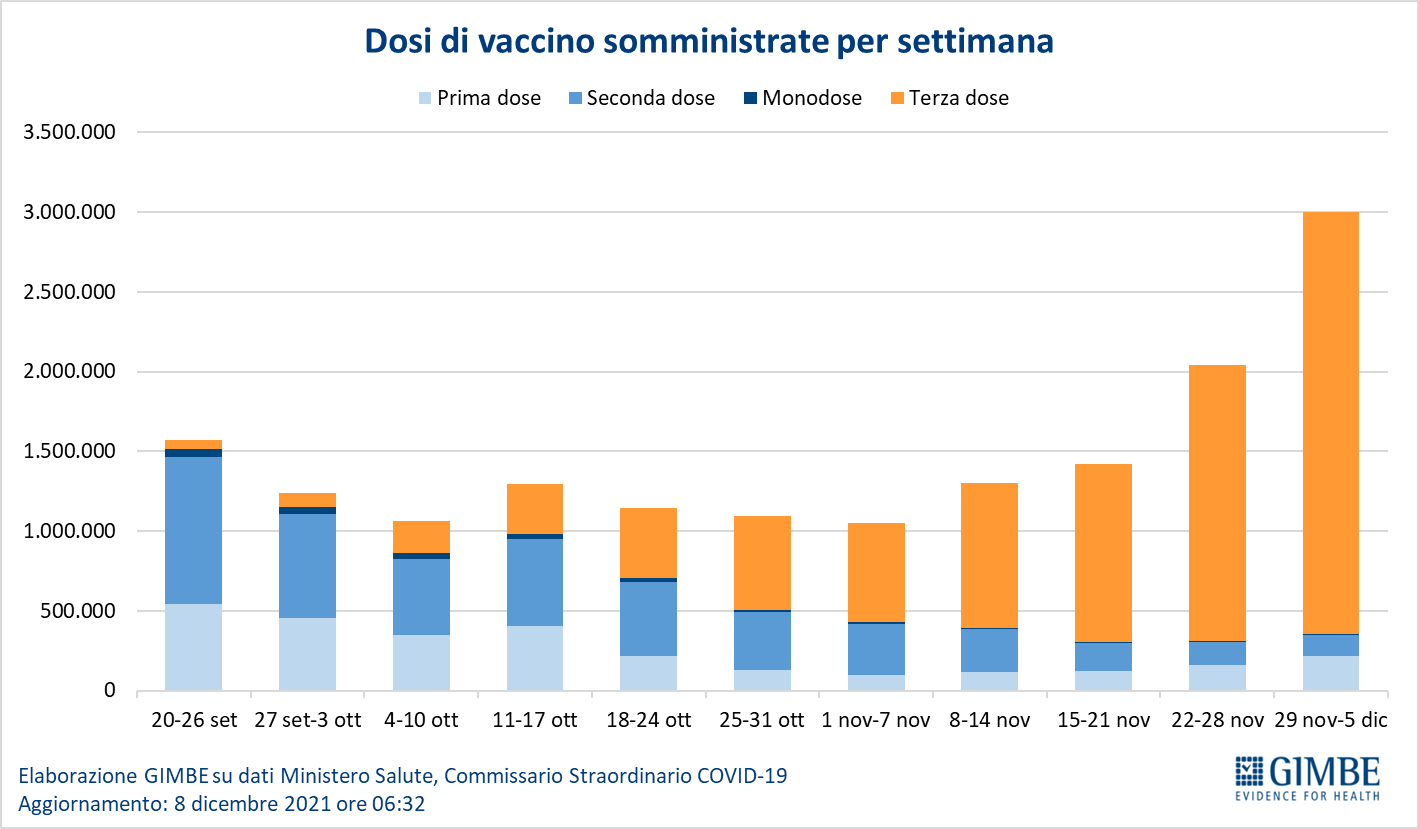
The targets defined by the commissioner for the period 1-7 December were exceeded on all days, with the exception of Sunday 5 December; a total of 480,162 doses were administered in excess of the planned 2,750,000.

Vaccines: new vaccinated.
In the week November 29-December 5, the number of new vaccinates rose to 223,116 (+ 31.7%) compared to 169,397 of the previous week (figure 10). However, there are still 6.6 million people without even a dose, of which 2.51 million over 50 at high risk of serious illness and hospitalization worry on the one hand, and on the other 1.09 million in the 12-19 age group who increase the circulation of the virus in schools (Figure 11).
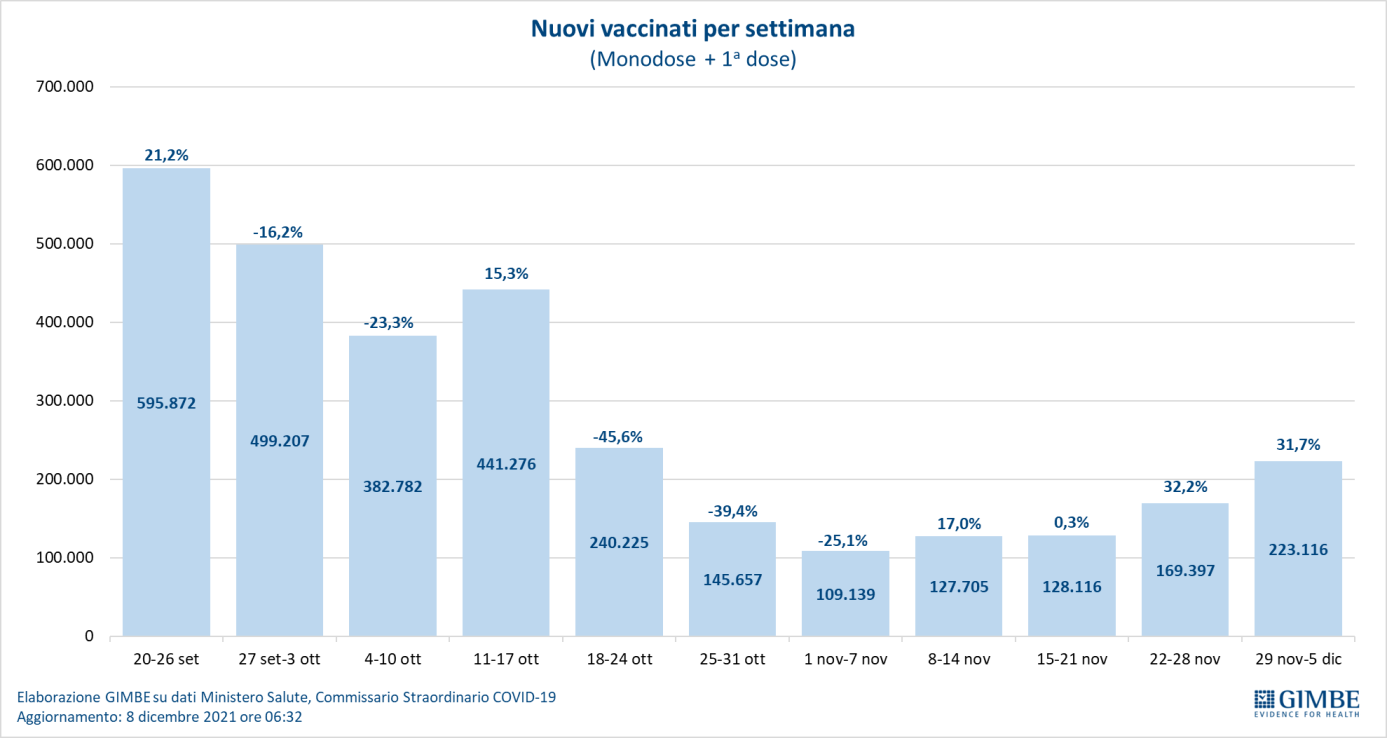
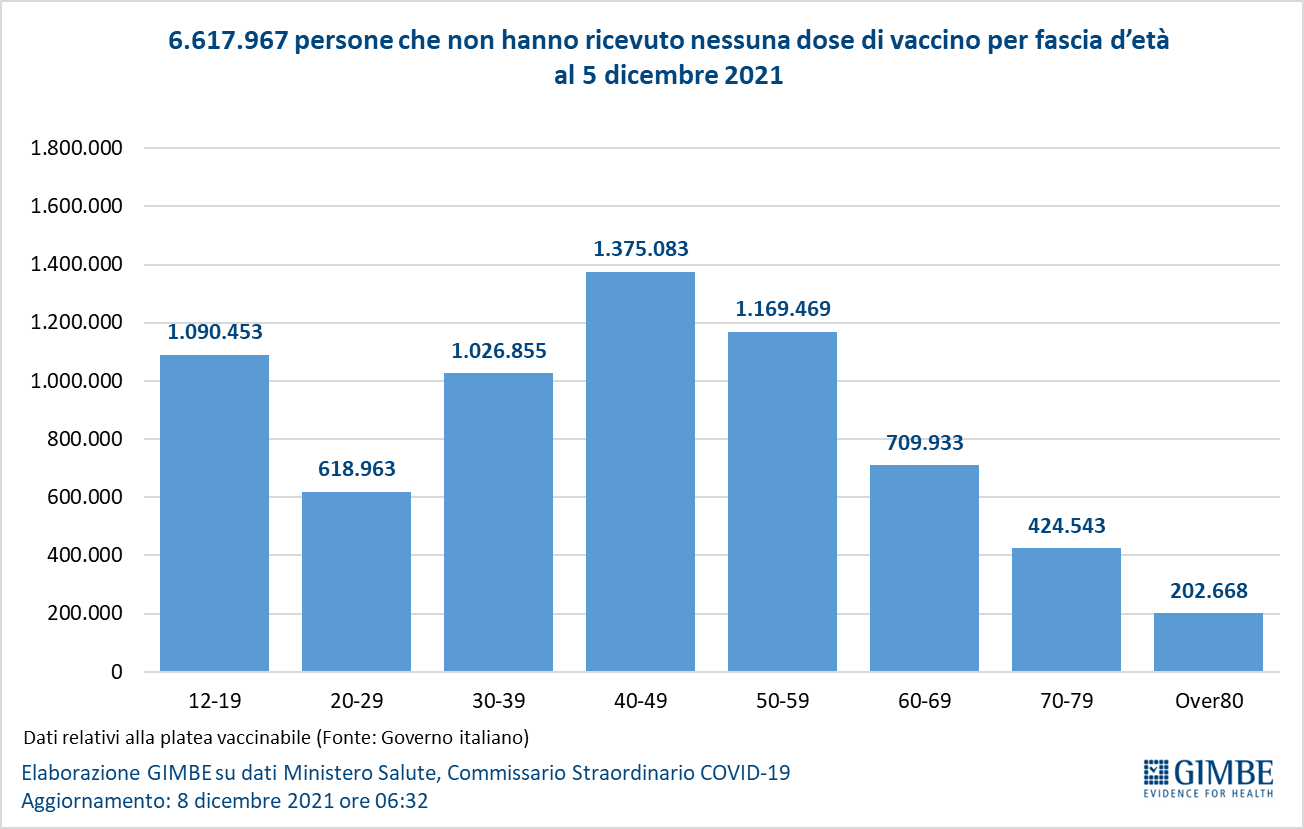
Vaccines: covers.
Coverage with at least one dose of vaccine is highly variable in the different age groups (from 97.5% of the over 80s to 78.2% of the 12-19 group), as is the case with regard to recalls, which in the over 80s they reached 59.3%, in the 70-79 age group 30.5% and in the 60-69 age group 24.2% (figure 12).
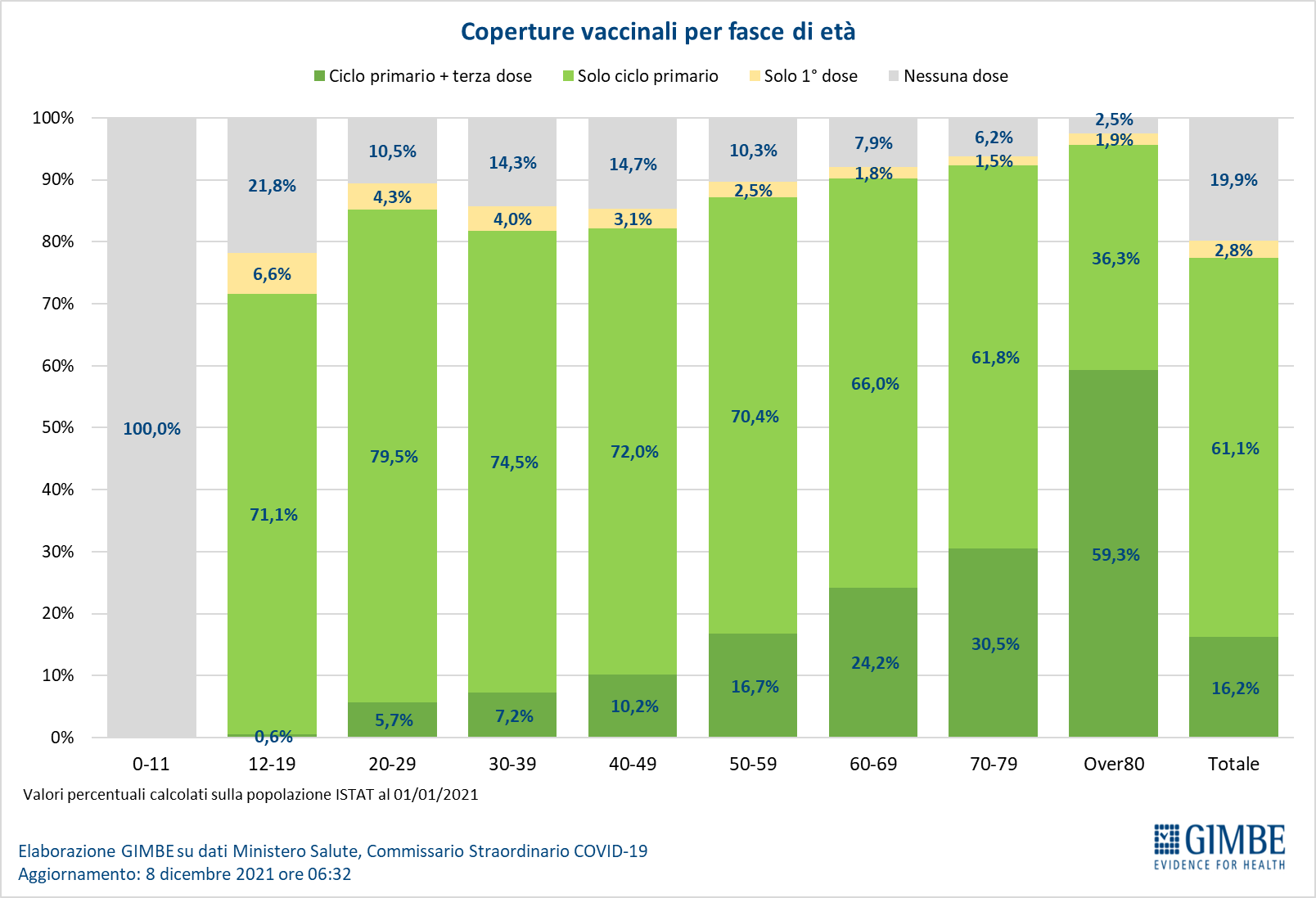
Vaccines: effectiveness. The need for the booster dose is well documented by the data from the Istituto Superiore di Sanità which demonstrate the reduction in vaccination efficacy 5 months after the completion of the primary course. In detail:
- the effectiveness on diagnosis drops on average from 75.3% for those vaccinated within 5 months to 43.9% for those vaccinated for more than 5 months;
- the efficacy on severe disease falls on average from 92.5% for those vaccinated within 5 months to 84.8% for those vaccinated for more than 5 months.
Overall, in people vaccinated with a complete cycle (plus any booster dose), compared to those not vaccinated, the incidence of diagnoses (by 65.7-74.9%) and especially of serious disease is reduced in the various age groups. (82.9-93.5% for ordinary hospitalizations; 89.1-100% for intensive care) and death (77.8-97%) (figure 13).
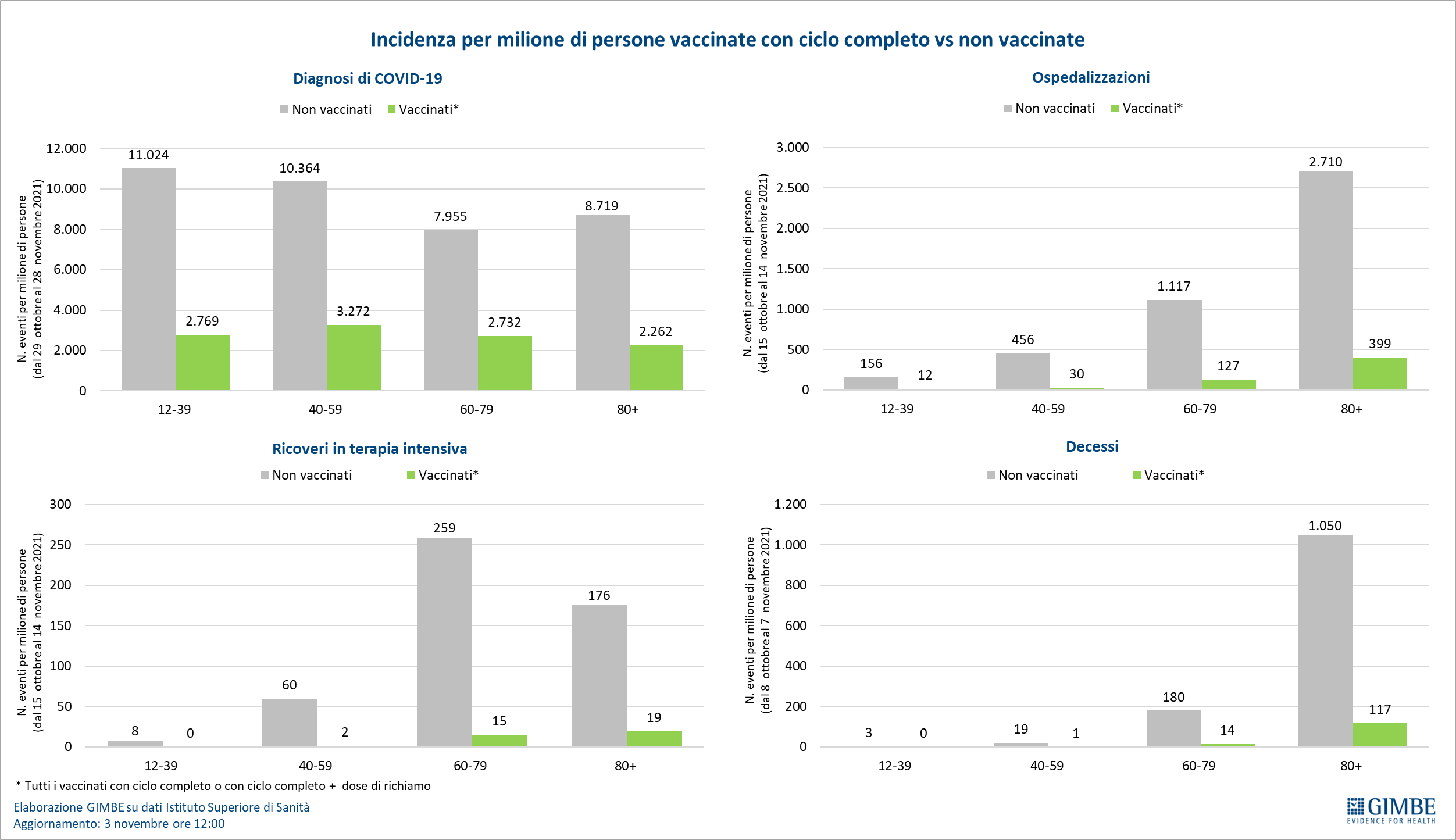
Vaccines: third dose . On 8 December (update 06.32) 9,609,029 third doses were administered with a 7-day moving average that exceeded 400,000 doses per day (Figure 14). According to the official audience (20,548,124) – updated as of December 1 – the vaccination coverage rate for third doses is 46.8% with clear regional differences, from 33.2% in the Aosta Valley to 57 , 4% of Tuscany (figure 15).
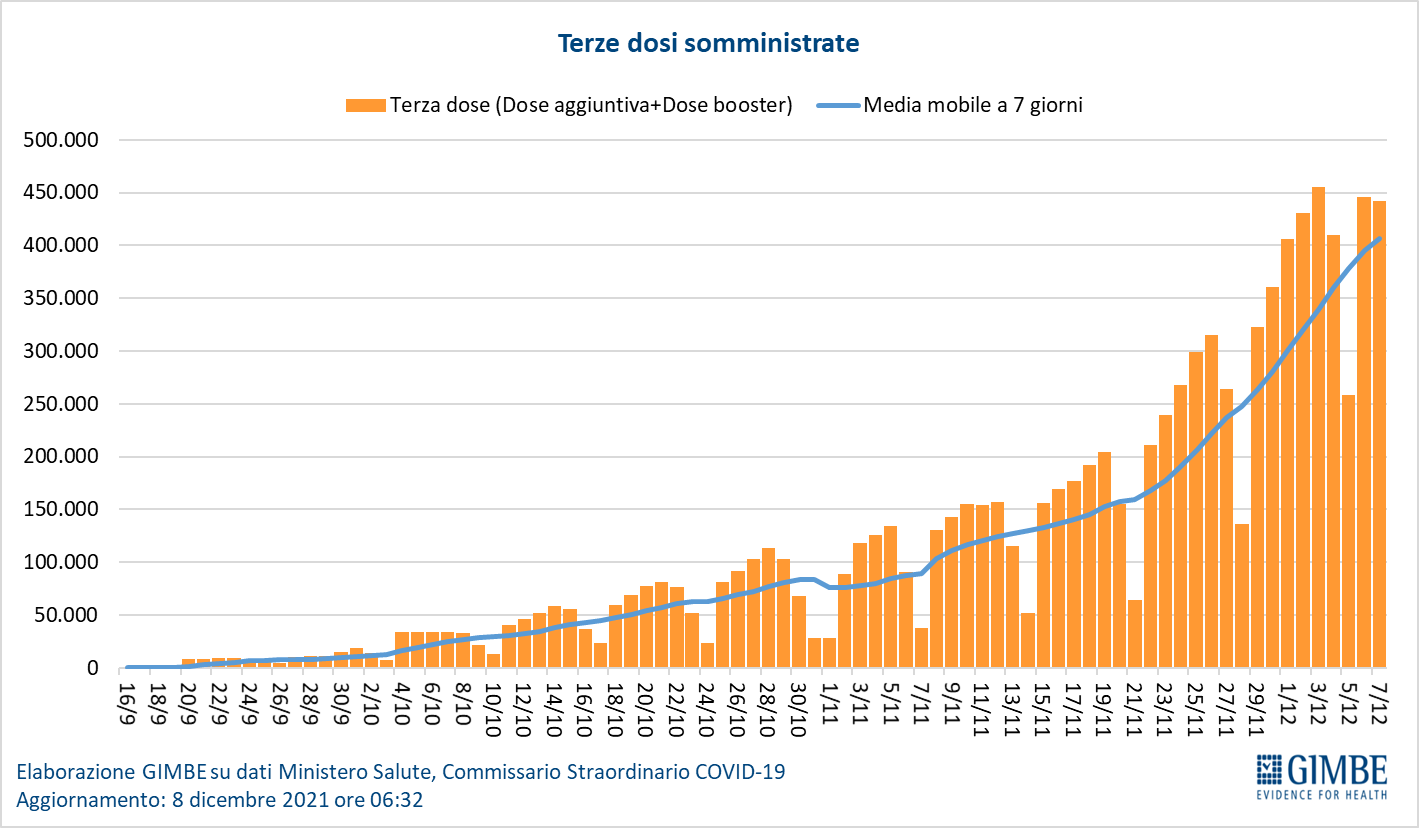
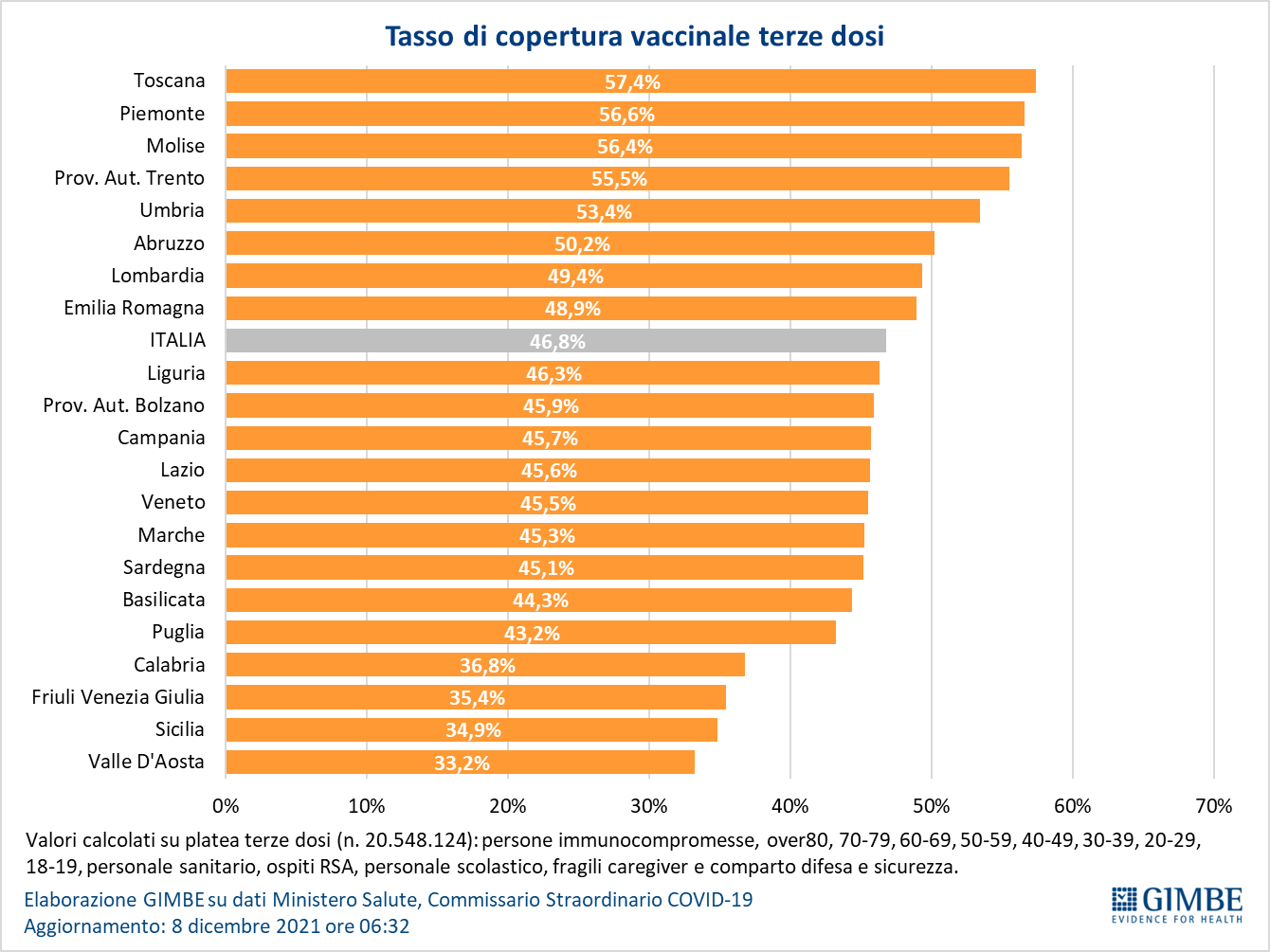
«For the period of the upcoming Christmas holidays – concludes Cartabellotta – if on the one hand it is impossible to make reliable predictions, on the other there are some reasonable certainties. First of all, with the current trend of growth of new cases – even if the impact on hospitals is "amortized" by vaccines – in the next 4 weeks various Regions will change color. Secondly, to contain the circulation of the virus and, above all, the pressure on hospitals, it is crucial to convince the undecided to get vaccinated and speed up with boosters. Finally, the increased opportunities for social contacts during the holidays require maximum caution in individual behaviors: use the mask in closed environments, possibly FFP2 if crowded, respect social distancing and frequently ventilate the premises, even at home during meetings with relatives and friends".
This is a machine translation from Italian language of a post published on Start Magazine at the URL https://www.startmag.it/sanita/perche-e-necessaria-la-dose-booster-report-gimbe/ on Thu, 09 Dec 2021 08:58:21 +0000.
